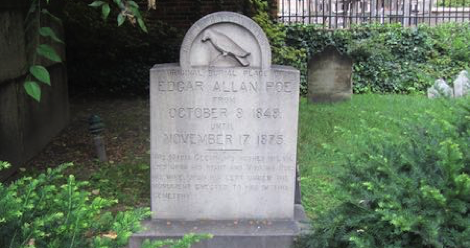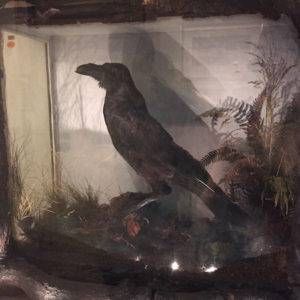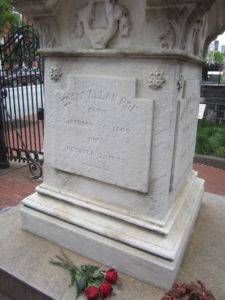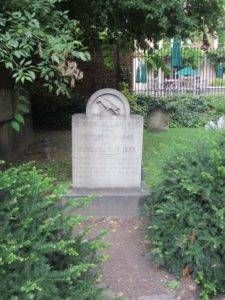
Red Roses for Edgar Allan Poe
The first thing I did when I landed in Baltimore was buy the red roses.
Staying in the middle of the city in the convention area, I was a little nervous about finding a florist. Thankfully, the luggage claim area had a vending machine that sold flowers so I took care of that part of my mission.
We were on our way to a professional conference for fundraising in Baltimore. For this trip, I was going to visit Edgar Allan Poe’s tomb at Westminster Burial Ground at the Westminster Presbyterian Church. He died on October 7th, 1849, and was buried in an unmarked grave.
The story goes that concerned citizens tried to raise the funds to better honor this legend of American literature, but the first tombstone, donated by George W. Spense, was broken in a freak accident when a train ran off its rails and ran straight through the monument yard where it was being made. A collection went up and half the funds were collected by a variety of people and a George Childs contributed the rest for the new monument. However, the monument was too large to put at his grave so it was put at the cemetery entrance. Unfortunately, it had the wrong date for his birthday. Well, it’s the thought that counts.
What I really fell in love with was the history of the Poe Toaster. For many decades, a man in a white scarf and big hat would come on Poe’s birthday and leave three roses and a bottle of cognac. No one knew who the mysterious Toaster was and it even seemed to be handed down at least once between generations. But in 2009, the Toaster stopped.

Charles Dicken’s Raven. Inspiration for Poe
Photo: Elisa Shoenberger
I loved this tradition; I felt that it embodied everything that Poe made me feel when I read his spooky works. When my mom introduced me to Poe, it was a revelation. Here were unnerving, dismal works that seemed to align with my own wicked sense of the world. The beauty of revenge served cold in “The Cask of Amontillado” or the delicious guilt-filled terror of “The Tell-Tale Heart.” And there’s the terrifying timeliness of “The Red Masque of Death.”
And then there was “The Raven.” This poem seared upon my brain as the pinnacle of poetry. The rhythm of the lines, the brooding mind of the narrator, that bird with its incessant croaking “Nevermore!” I memorized the first few stanzas and have written parodies of it throughout my life (one was about a classmate in math class, while the other one brought Shel Silverstein’s MeeWho and the Raven together at last). This poem was a gift to me and my wyrd worldview.
Naturally, I had to buy three red roses and leave it at his grave.
It wasn’t January or close to it. But I wanted to pay tribute to the first author who understood my strange sensibilities, my fondness for the macabre and mad.
During a lunch break at the professional conference, we grabbed a cab and took it to the graveyard. It was a small plot of land with an adjacent building. Just through the cemetery gates, the Poe monument stood before us, tall, stone, and erect.

Edgar Allan Poe’s Monument with Red Roses
Photo: Elisa Shoenberger
I wasn’t 100% sure what I wanted to do there; I had only thought through the putting of the roses down. So I placed the roses at his tomb, nodded my head, and even tried to recite a few lines of “The Raven.” It would do.
We wandered a bit more through the cemetery since we had traveled so far from our conference for this moment of memorial. The graveyard had unusual tombs; almost like barrel vaults set into walls. It was a first for me. But then we found his actual burial place as opposed to the memorial that we had first found. It was a simple tombstone in contrast. I briefly considered moving my roses to this stark stone but decided to keep them with the more ornate memorial. I think he would have preferred it that way.

Edgar Allan Poe’s Actual Grave marker Photo: Elisa Shoenberger
We soon left the cemetery to return to the world of the living, leaving behind the monument, roses, and all.
Roses evermore.











